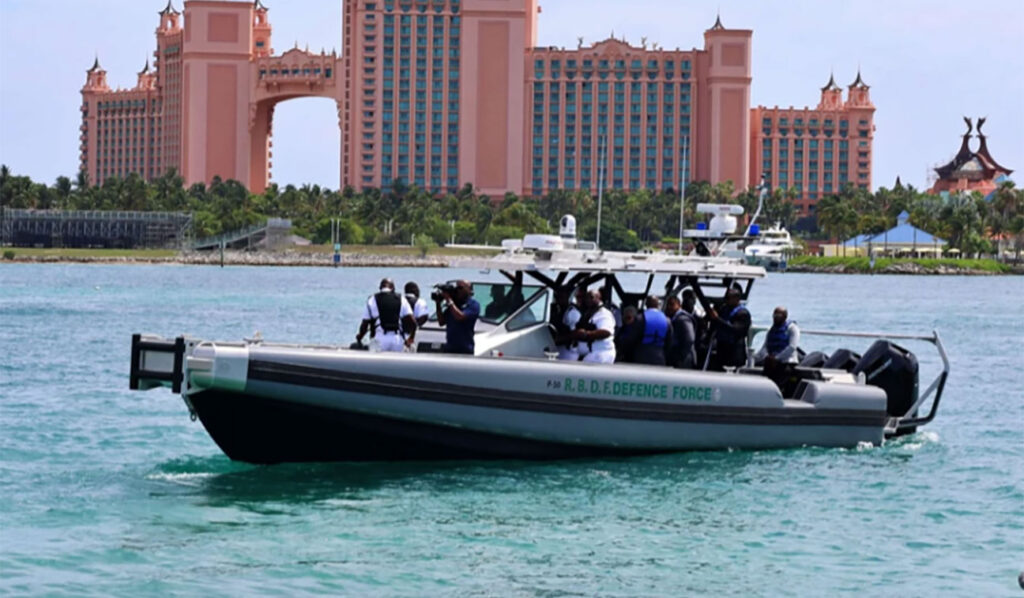The Bahamas has a lot of maritime territory to cover. To that end, its government announced in July 2025 that it is negotiating the purchase of a flagship offshore patrol vessel, the fifth new ship for the Royal Bahamas Defence Force (RBDF) this year as the force rapidly modernizes and expands its fleet.
The 62-meter vessel boosts national security efforts and aids in efforts to combat drug smuggling, human trafficking and illegal fishing, RBDF Commodore Floyd Moxey told a parliamentary committee. “What we have been doing is focusing on ensuring that our fleet is at basically optimum capability. That would be determined early on [and] will give us the ability to accomplish our mandate, which is basically to protect the territorial integrity of The Bahamas and to patrol the waters of The Bahamas,” Moxey told committee members.
Earlier this year, The Bahamas acquired four offshore patrol vessels known as Secure All-around Flotation Equipped (SAFE) boats. The new vessels, which can reach speeds of 40 knots, are aimed at strengthening border security and territorial defense, enhancing maritime surveillance and improving response capabilities during natural disasters. However, at 12.5 meters, they are much smaller than the proposed flagship and lack the capability of a larger patrol vessel in interdiction or coastal defense. The four boats, launched in May, have been spread throughout The Bahamas’ sprawling archipelago — Abaco, Grand Bahama, Inagua and Ragged Island. “We acquired four SAFE boats within the last four months, and we spent some time determining where was the best place in the country to locate those SAFE boats,” Moxey said, adding that their locations provided increased security and domain awareness.
Moxey also spoke about the continued rise in illegal Haitian immigration. The RBDF intercepted a boat of Haitian migrants two weeks ago in waters off Abaco. “As you are aware, we’re watching the push-and-pull situation in Haiti, the gang violence. So we are sending our patrol boats to the southern Bahamas to ensure that we maintain that presence and that posture in the southern Bahamas in the event of any mass migration from Haiti. So we’re using our air assets, and we’re using our surface assets to do that.”
Moxey noted that, unlike 20 or 30 years ago, smugglers ferrying Haitians now use powerful speedboats instead of traditional sailing vessels, making their apprehension more difficult.

